If you have a room that is unoccupied, then air from the ducts isn't as necessary in that room. But how do you reduce airflow from the vents in that room? Let's take a look at the options below.
In order to reduce airflow from vents in an unoccupied room, use these methods:
- Close vents
- Vent deflector
- Install manual dampers
- Smart thermostat
- Install variable-speed blower motor
- Clean ductwork
By mitigating airflow to a specific room, your home will be more comfortable, and you'll save money on your energy bill. In this article, we will take a closer look at each option for reducing airflow to a vent. In addition, we will answer other frequently asked questions about HVAC systems, so read on!
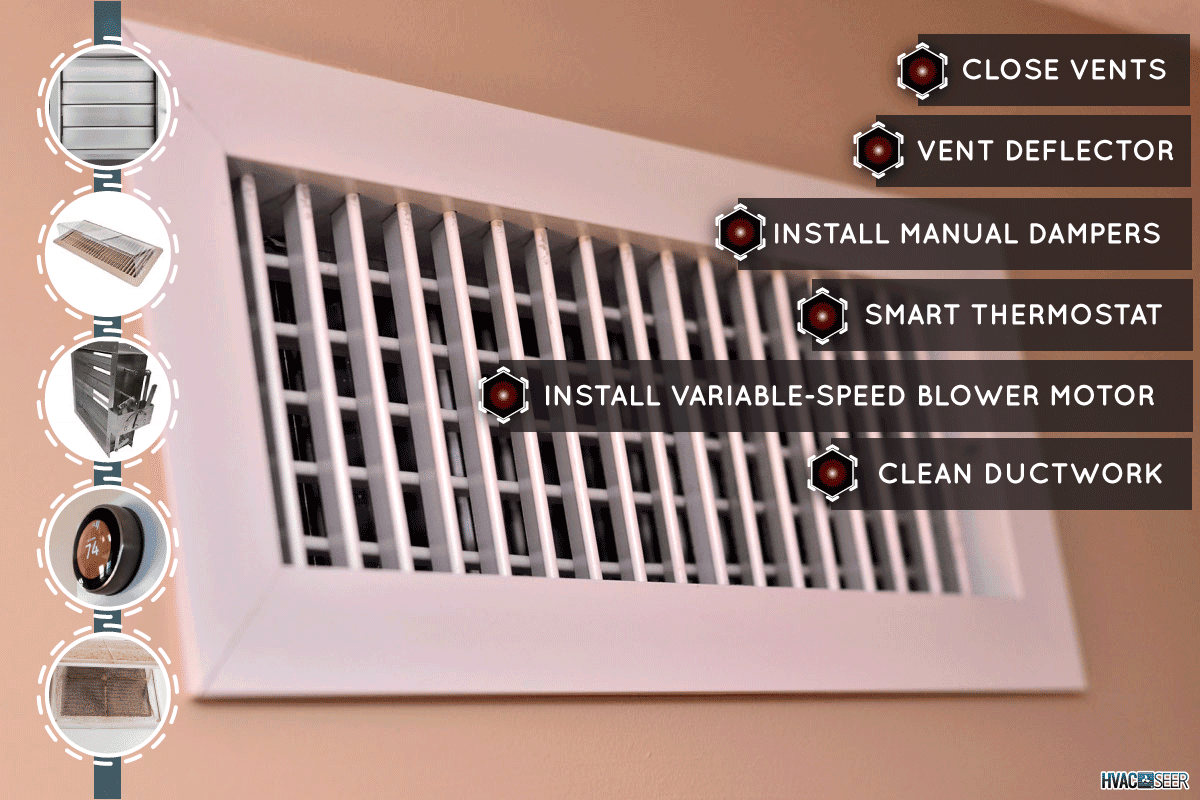
How Do You Minimize Ductwork Airflow?
It's important to have your HVAC system running smoothly and efficiently. To do so, you need to have good airflow throughout your entire duct system.
For larger homes, airflow can be inconsistent from room to room. For example, in a story-story home, heat will rise to the second story faster than it will to the first story. As a result, you could be getting more hot air flowing through rooms that aren't occupied as often.
In comparison, if it's summertime, heat will rise to cause a master bedroom on the second story to be significantly hotter than a guest bedroom on the first story.
This can be inefficient, and some homeowners combat this by turning up the heat or air conditioning. However, not only will this raise your energy bill, but it can also cause uneven temperatures from room to room.
There are more efficient ways to reduce airflow throughout your home. Let's take a look at some of the most common methods:
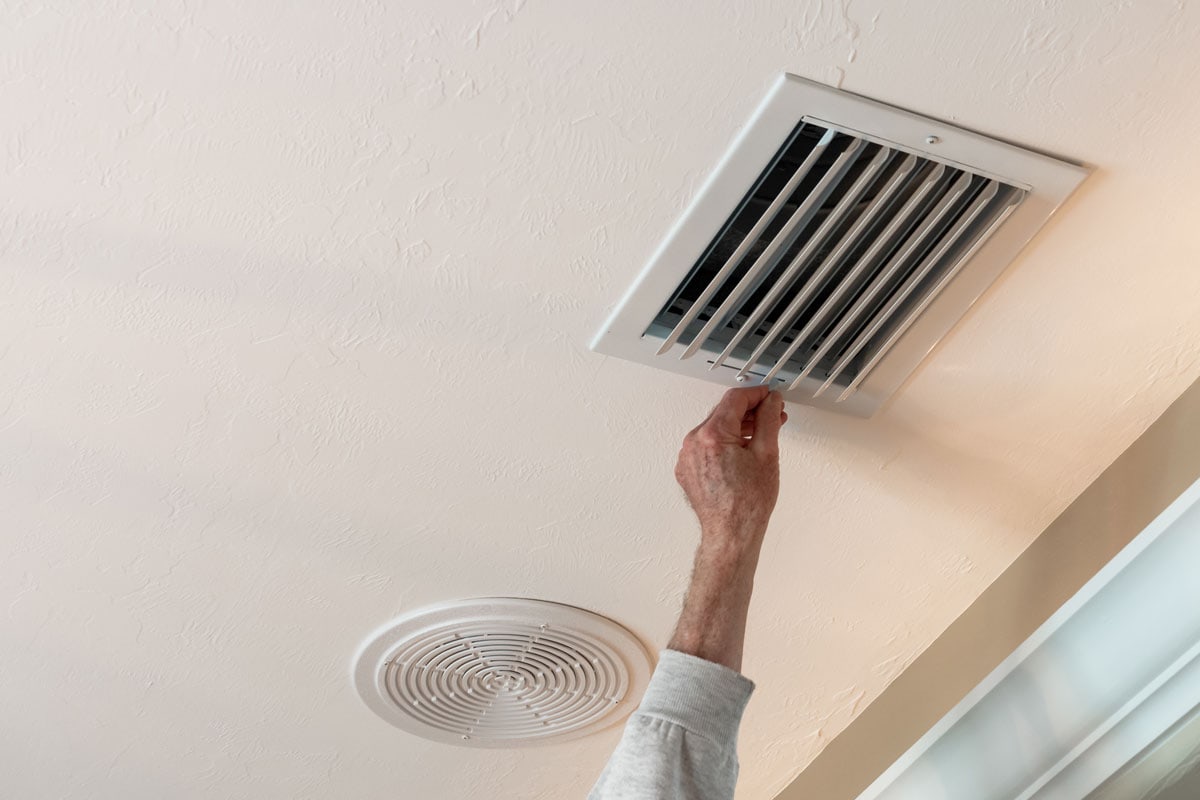
Close Vents
The simplest way to reduce airflow to a specific room is to close the vents. This will stop air from flowing into that room, making it less comfortable.
For example, if you have a room that is only used when guests come over, then you can close the vents when no one is using them. As a result, the air will circulate to other parts of the house where people spend more time.
You can also partly close the air vent registers. This will reduce the amount of airflow but not stop it completely. There are some things to know about closing air vent registers.
First, you don't want to close off more than a fifth of the total vents in your home. If you do, then the airflow will be restricted, and your HVAC system will have to work harder.
Also, avoid using furniture to block air vents. This can damage your furniture, so only adjust the vent itself.
Vent Deflector
Some air vent registers don't have adjustable vents. If this is the case in your home, then you can use a vent deflector.
A vent deflector is a device that you attach to the air vent register. It will redirect the airflow so that it goes up or down instead of straight out.
Vent deflectors vary in price ($10-$70) depending on the size and style. You can find them at most home improvement stores or online.
Click here to see these vent deflectors on Amazon.
Install Manual Dampers
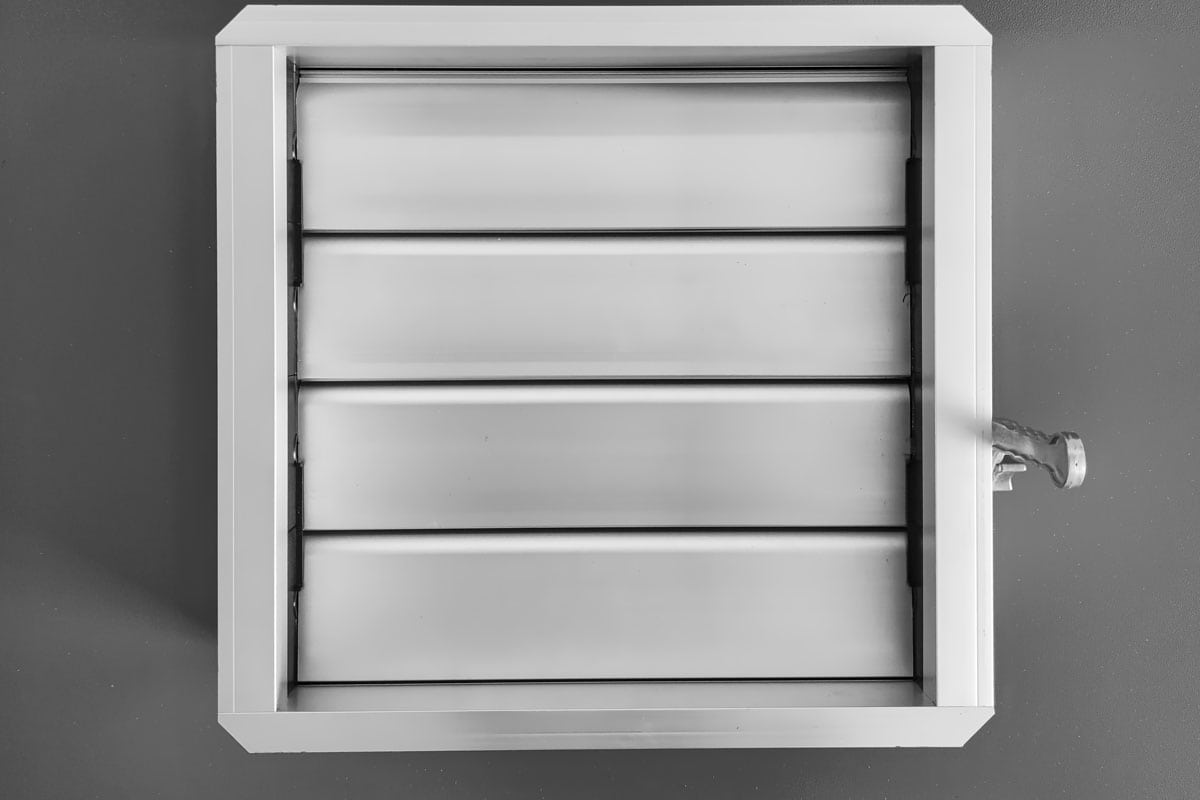
Manual dampers are installed in the ductwork and are used to control airflow. You can open or close them as needed to adjust the amount of airflow going to a specific room.
For example, if you want more airflow in the living room, then you would open the damper for that room. Conversely, if you want less airflow in the guest bedroom, then you would close the damper for that room.
Manual dampers are a great way to fine-tune airflow throughout your home. They are low maintenance and can last for many years.
Smart Thermostat
Like manual dampers, a smart thermostat will create zones in your home. These zones are areas where the temperature can be controlled separately from other parts of the house.
For example, you may have a zone for the downstairs and a separate zone for the upstairs. Within each zone, you can set the temperature as desired.
A smart thermostat will also learn your family's schedule and make adjustments accordingly. For example, if you're gone during the day, then it will lower the temperature to save energy.
By getting a smart thermostat, you can reduce your energy bill while still maintaining comfort in your home.
Check out this Energy Star-certified Smart Thermostat on Amazon.
Install Variable-Speed Blower Motor
One of the most significant factors in airflow is the blower motor. This component is responsible for moving air throughout the ductwork.
A standard blower motor typically only has two modes: on and off. When the blower motor is on its full blast, it can move a lot of air. However, this is also when it uses the most energy.
In contrast, a variable-speed blower motor can operate at different speeds. For example, it can start slowly and then ramp up to full speed as needed.
This gives you more control over airflow and can save you money on your energy bill. If you're looking for ways to improve airflow in your home, then a variable-speed blower motor is a great option.
Clean Ductwork
Dirty ductwork is one of the most common reasons for poor airflow in a home. Over time, dust and dirt can build up in the ducts and restrict airflow.
As a result, this could cause air to push to a room that isn't being used as much or cause the HVAC system to work harder than necessary.
By cleaning your home's ductwork, you can improve airflow to the rooms that need it most. This is a great way to improve comfort and reduce your energy bill.
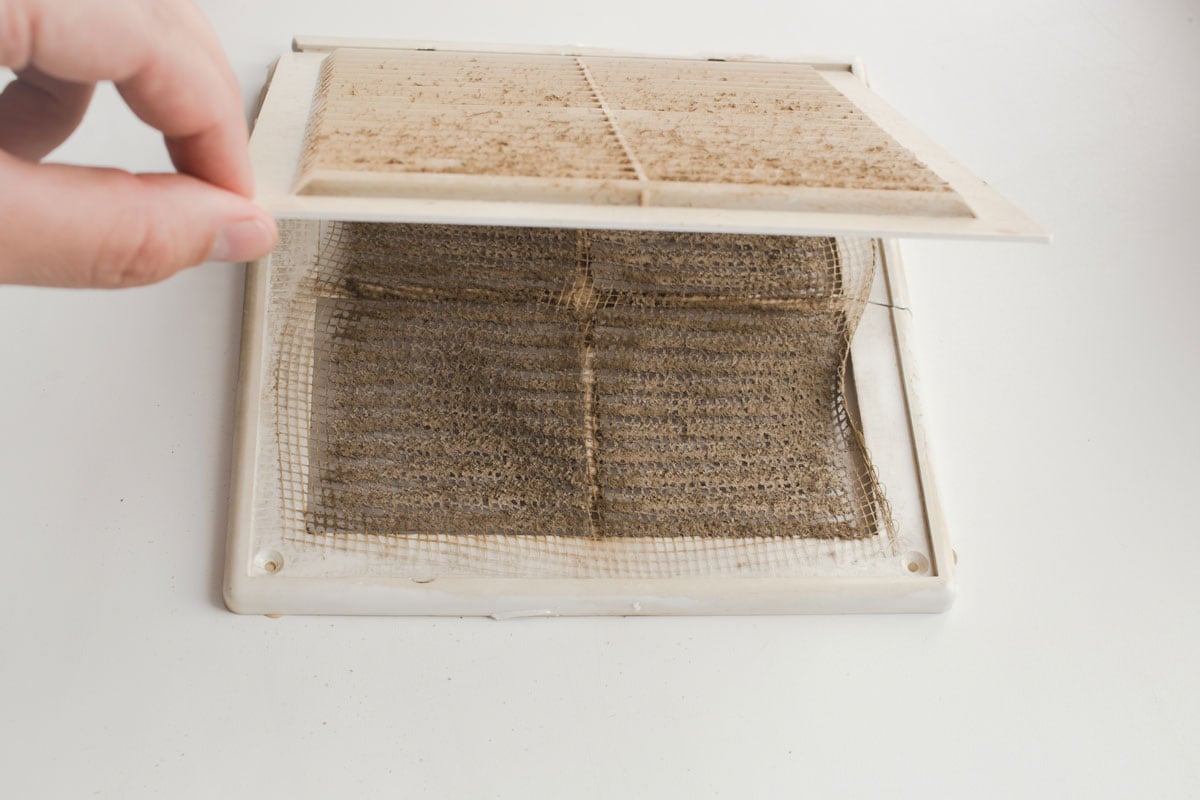
How Do I Fix The Airflow In My House?
If your home doesn't seem to be getting enough airflow, then there are several things that you can do to improve it. Let's take a look at some of the most effective culprits and solutions:
Dirty Air Filter
Do you know the last time the air filter in your home was cleaned? If you can't answer that question, then it might be time for a cleaning or replacement.
A dirty air filter can restrict airflow and cause your HVAC system to work harder than necessary. As a result, this could lead to increased energy costs and decreased comfort in your home.
An HVAC air filter is similar to the one in a vehicle. It needs to be replaced on a regular basis—typically every 3-6 months. By doing this, you can ensure that your home has adequate airflow.
Damaged Or Dirty Ductwork
Over time, your home's ductwork can become damaged or dirty. This could lead to gaps, blockages, or leaks in the ductwork, which can reduce airflow.
If you suspect that your ductwork is damaged or dirty, then it's best to have it inspected by a professional. They will be able to determine if there are any problems and make recommendations.
Blocked Condenser Unit
The condenser unit's job is to collect or remove heat from the home. If the condenser unit is blocked, then it won't be able to do its job properly.
A common way that a condenser unit can become blocked is by landscaping. For example, if you have bushes or trees next to the unit, then their roots could grow and block the vents.
It's important to keep the area around the condenser unit clear so that it can operate properly. Otherwise, you could see an increase in your energy bills. As a general rule of thumb, give your condenser unit at least 2 feet of clearance on all sides.
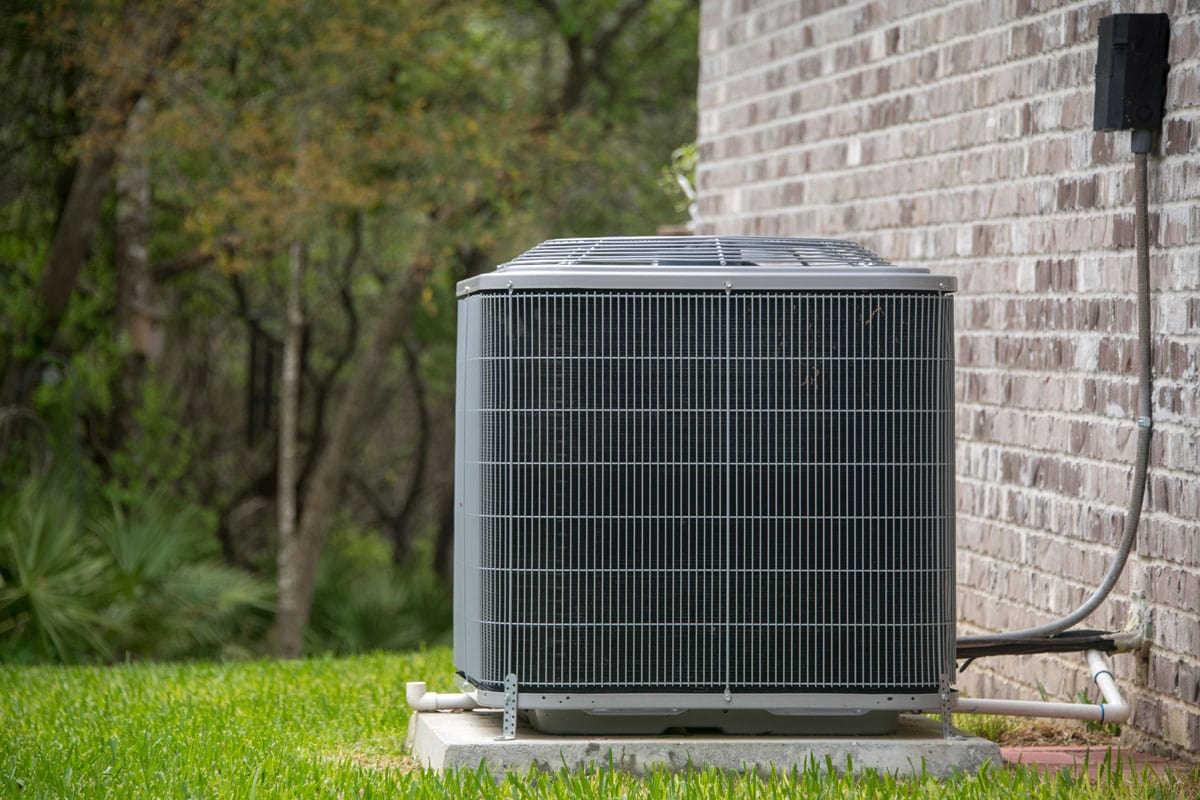
Lack Of Air Vents
Newer homes typically have enough air vents to provide adequate airflow. However, older homes might not have enough vents.
If your home doesn't have enough air vents, then that could be the reason for poor airflow. For example, a larger living room will need multiple vents to ensure adequate airflow.
If you don't have enough vents, then you might need to have some added. This is a job for a professional since they'll need to determine the size and location of the new vents.
Failing Blower Motor
The blower motor is responsible for moving air through your home. If it's failing, then that could lead to decreased airflow.
A blower motor typically lasts around 10-20 years. However, they can fail sooner if they're not properly maintained. If you suspect that the blower motor is failing, then it's best to have it inspected by a professional. They will be able to determine if it needs to be repaired or replaced.
Wrong Size HVAC Unit
Lastly, your airflow issue could be due to the wrong size HVAC unit. If the unit is too small, then it won't be able to adequately heat or cool your home. Conversely, if the unit is too large, then it will cycle on and off too frequently. This could lead to increased energy costs and decreased comfort in your home.
It's important to have your HVAC unit sized by a professional. They will take into account the square footage of your home, among other factors.
Final Thoughts
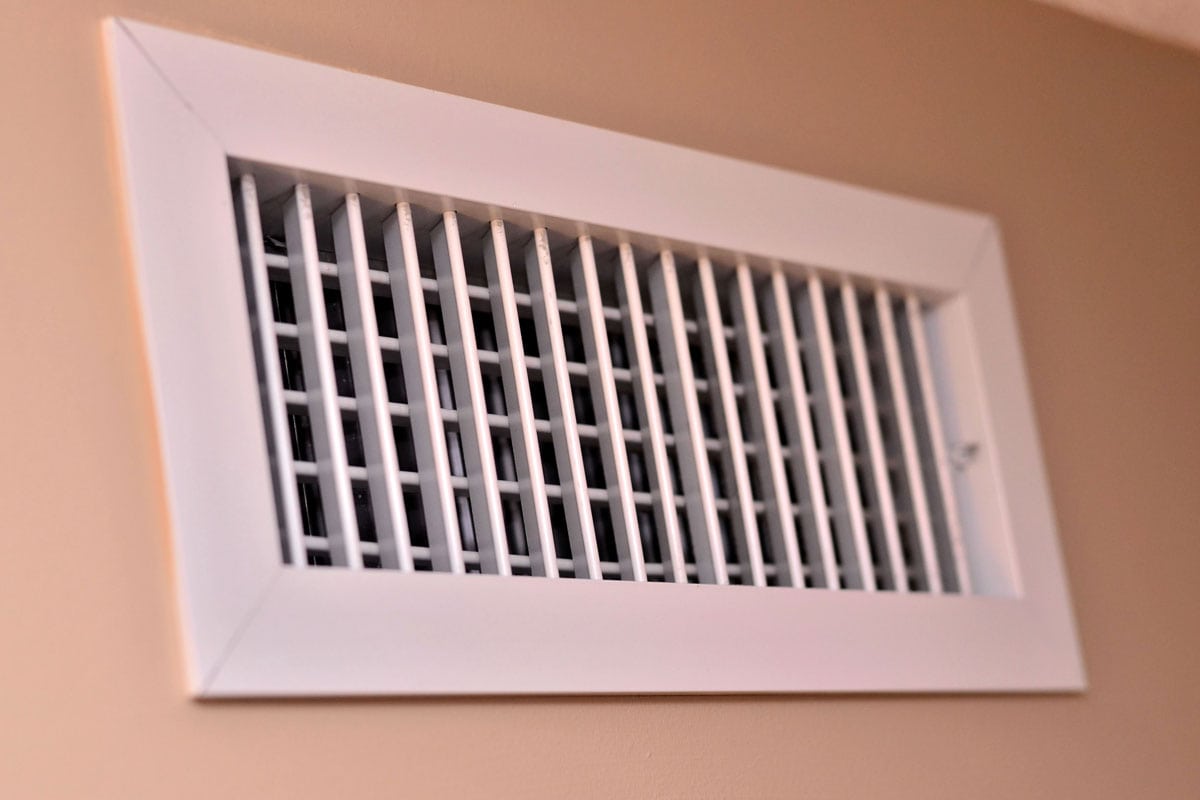
Overall, whether you need to reduce or improve airflow in your home, there are several things that you can do. By following the tips above, you can ensure that your home has adequate airflow.
If you have any questions or need help with your HVAC system, then don't hesitate to contact a professional. They will be able to help you resolve the issue and ensure that your home is comfortable all year long.
Made it to the end? Here are other articles you might find helpful:
How To Increase Airflow To The Second Floor Of Your Home [Helpful Tips & Tricks]?


